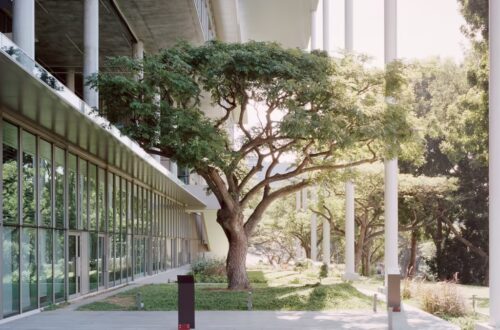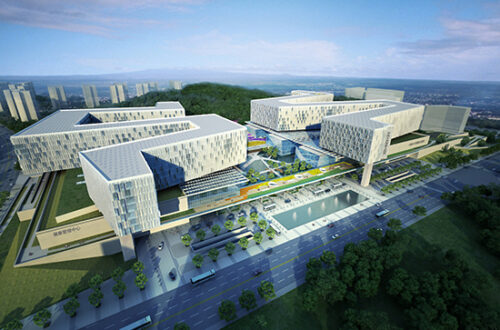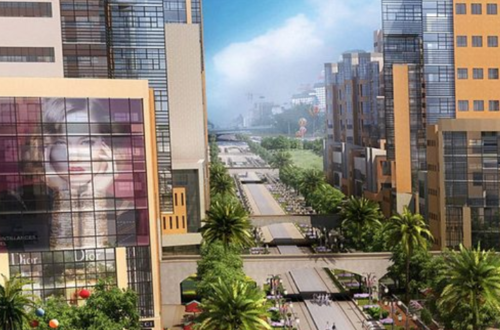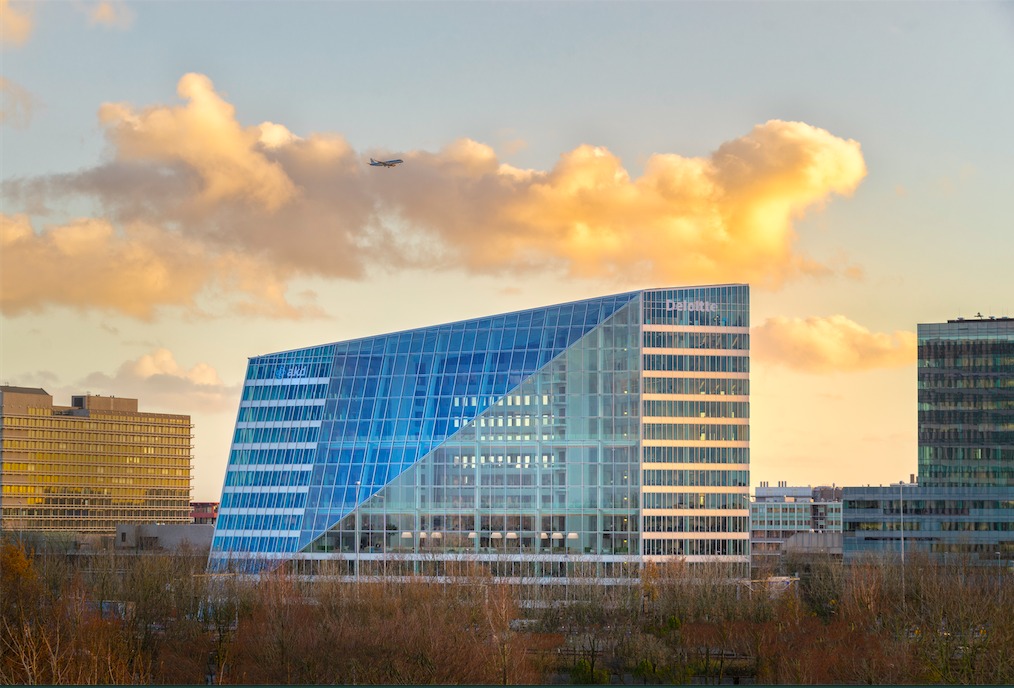
Case Study: Sustainable Features of The Edge in Amsterdam
Everyone in the architecture industry has at least once in their life heard of The Edge. Known to many as the building design of the future, this office in the heart of Amsterdam has gained international recognition as the most sustainable and smartest office building in the world. It sheds new light on future real estate by promoting buildings that generate more energy than they consume. Its well-thought form creates a comfortable living environment, while simultaneously focusing on sustainability and efficient energy consumption. This article will delve deeper into all the innovative features and sophisticated designs of The Edge, and just what makes it so universally renowned.
Concept and design origin
PLP Architecture – a London-based collective of architects, designers and researchers – was commissioned to design The Edge, which was meant to be used as the new offices for Deloitte in Zuidas, Amsterdam’s business centre. Two pivotal aims guided the entire design process: to consolidate Deloitte’s employees that previously spread around multiple buildings throughout the city, as well as to create a “smart building” intended as a catalyst for Deloitte’s transition into the digital age.
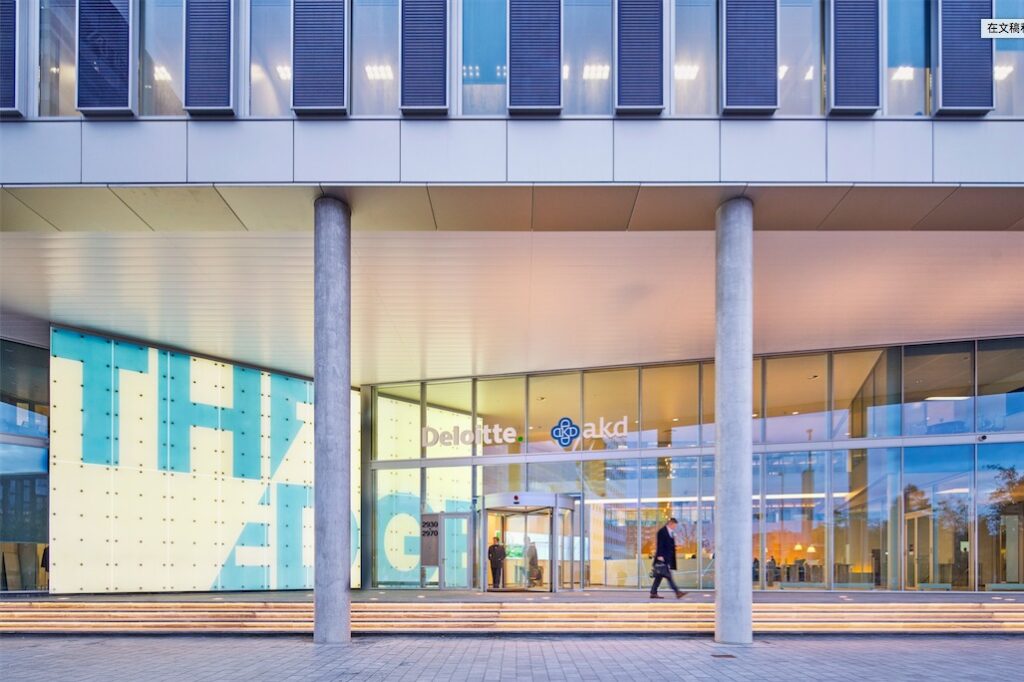
This was clearly no easy feat, however, the workers at PLP Architecture took on the challenge by starting off with the design of a social condenser – a nucleus for the building. The atrium, designed with bridges and exposed lift cores as nodes of horizontal and vertical activity, serves as the central hub, uniting various social environments to foster an unique internal working culture. It functions as a grand theatrical device: a stage visible from the surrounding offices arranged like an amphitheatre, and a lens that showcases the diverse social interactions as a civic spectacle to the city beyond. Ultimately, PLP’s design for the building won various awards, including the 2016 Urban Land Institute Global Awards for Excellence as well as the British Expertise International Awards in the same year .
Building orientation
The Edge has been built from the ground up to take advantage of not only the latest technology, but its surrounding environment as well: the mere orientation of The Edge brings it huge advantages. It has been designed and shaped to take maximum advantage of the sun throughout the year. An example are the windows, which give the office the best use of daylight when integrated. Moreover, having 6000 m2 of solar array on its south-facing facade helps to keep solar radiation from entering the building while also providing for all its energy needs.
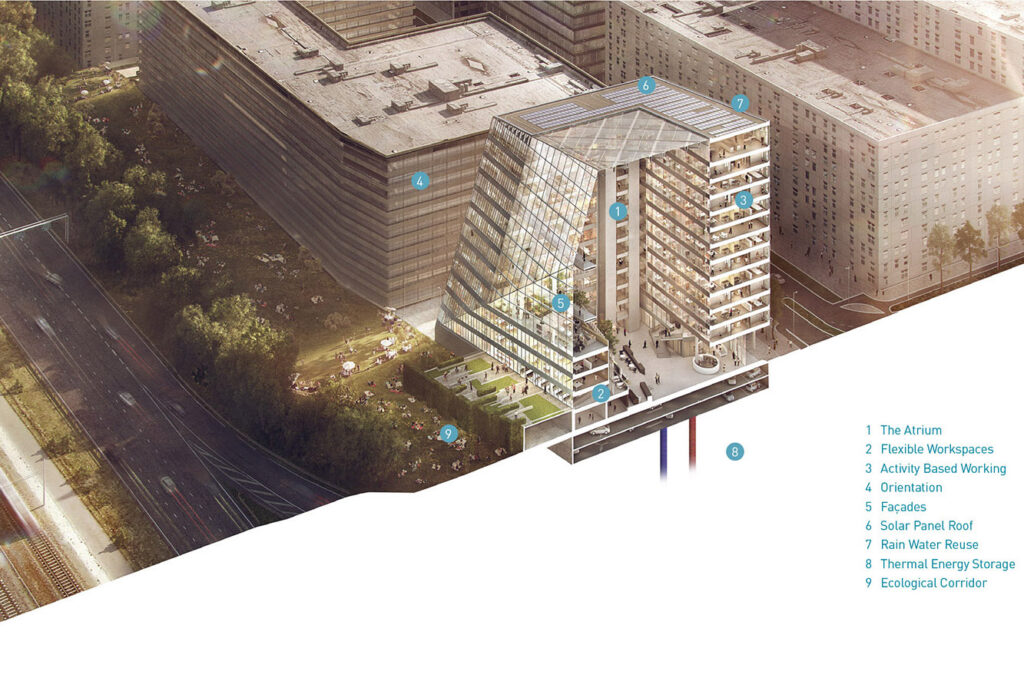
The fact that it is built over a groundwater aquifer means that the building can draw from it, with thermal energy storage pumps which manage warm and cold water. This feature while using IoT sensors can track both water usage as well as local climate conditions.
Fifteen-story atrium

The atrium, a key aspect of the Edge’s design, is the “gravitational centre of its solar system” (Randall, 2015). A loop of natural ventilation is created due to the mesh panels between each floor, which let stale office air spill into open space, where it rises and is exhaled through the roof. Subtle changes in temperature and air currents create an outdoor-like ambiance. Even on a stormy day, the building stays radiant with natural light, showcasing its glass angles.
Furthermore, the atrium, featuring its distinctive slanted roof that appears to have a wedge removed, floods workspaces with natural light while acting as a sound barrier from nearby highways and train tracks.
Innovative work design
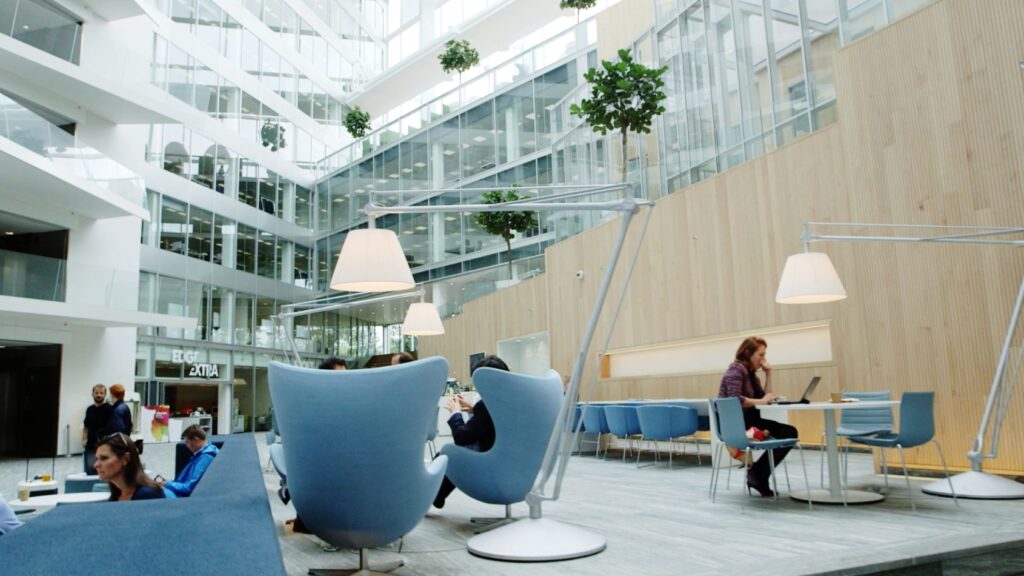
As part of the het nieuwe werken philosophy, the design of the work spaces at the Edge are aimed at breaking people away from their fixed locations and rigid ways of thinking. For example, employees are not assigned fixed desks, and lockers are instead encouraged as home base: find a locker with green light, flash your badge and it’s yours. However, the workers are discouraged from keeping a single locker for a long period of time in order to promote the philosophy.
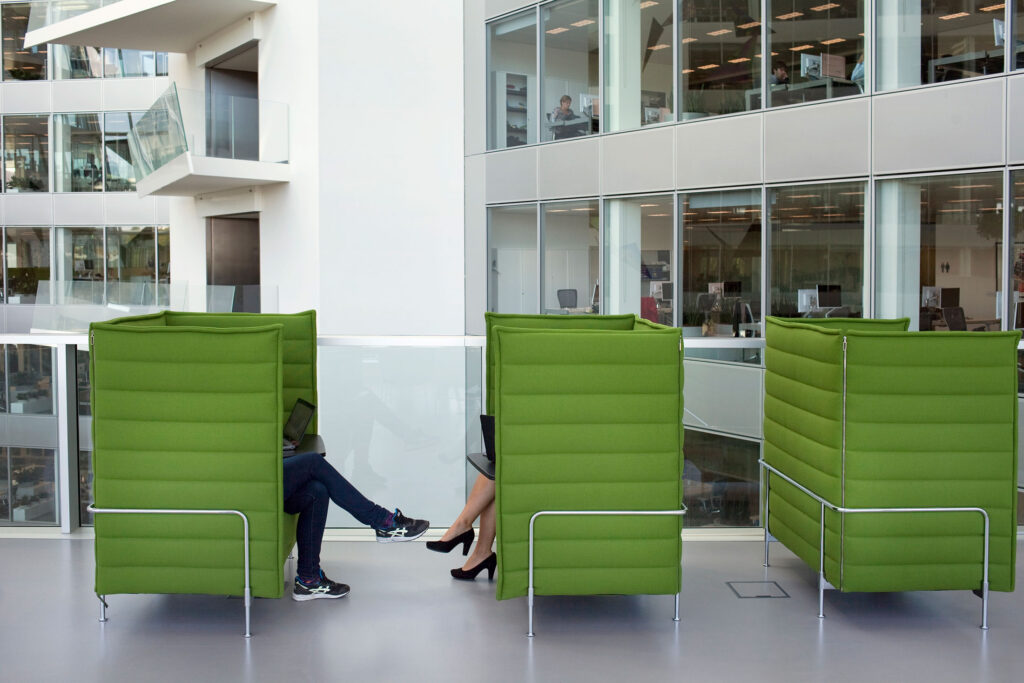
The Edge also incorporates a concept called hot desking, which limits the amount of desks between workers: 2,500 Deloitte workers share 1,000 desks. This helps foster new relationships, chance interactions and just as important, an efficient use of space. In many rooms, there are no desks, only a lounge chair and a lamp, which is perfect for a phone call, as desks are only used when absolutely necessary. Moreover, there are also game rooms and coffee bars with espresso machines that remember how you prefer your coffee. And massive screens around every corner can be synced wirelessly with any phone or laptop.
Parking design
Aside from the highly integrated technological systems, even the garage has key features to make life easier and more efficient. When you arrive at the building, garage entry is automated. A camera snaps a photo of your licence plate, matches it with your employment record, and raises the gate. Even the garage uses sensor-equipped LED lights, which brighten as you approach and dim as you leave. It’s the Netherlands, so a separate garage for bicycles and free chargers for electric vehicles aren’t surprising either. In Amsterdam, even the airport taxis are Teslas!

Having read til now, many may question the respect for privacy given the cameras, however, Deloitte surveyed employees before it installed the licence plate scanner. In the end, the vast majority of respondents thought it was acceptable, and bosses can not access personal data from The Edge’s sensors.
Integration with the Internet of Things
The Edge features nearly 30,000 IoT sensors that gather anonymous data on various activities within the building. This includes information on heating and cooling systems, lighting, room occupancy, printers, and even coffee machines.
The entire IoT network operates using machine learning algorithms designed to optimise energy consumption, performance, user comfort, and productivity. As a result, the building consumes only about 30% of the energy typical for an office of its size. The network monitors and manages several factors that influence occupants’ comfort, such as lighting, temperature, CO2 levels, and humidity.
Additionally, The Edge includes an app as part of its IoT ecosystem, allowing employees to locate parking spaces, reserve desks, report issues to facilities management, and track their own energy usage while in the building.
Innovative water storage
Throughout the Edge, two types of tubes are wired in a vast network: one that holds data (ethernet cables) and one that holds water. Hidden behind each ceiling tile is this network of thin blue piping that transports water to and from the building’s underground water storage, providing radiant heating and cooling.
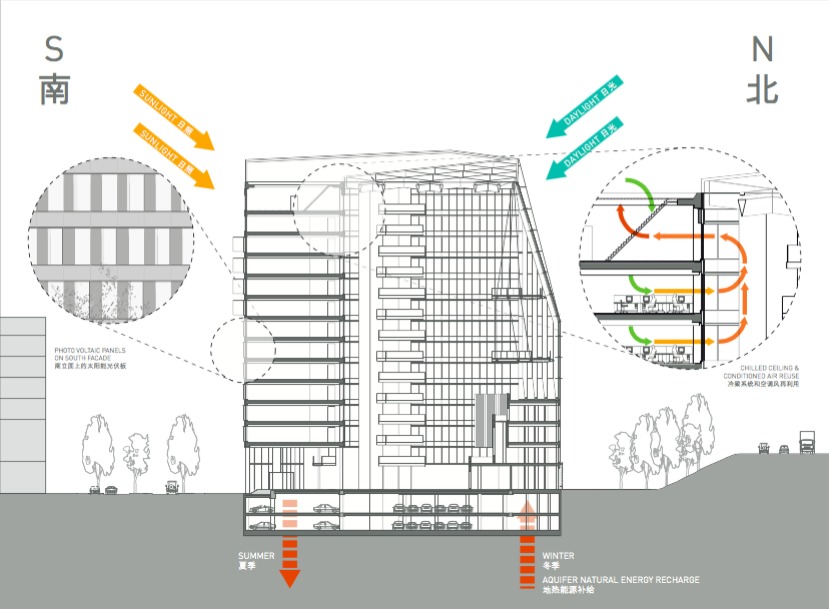
In the summer, the building circulates warm water down over 400 feet into the aquifer below, where it is insulated until winter. During the colder months, this stored water is retrieved for heating purposes. According to Robert van Alphen, project manager for OVG at The Edge, this system is recognized as the most efficient aquifer thermal energy storage solution in the world.
Usage of sunlight
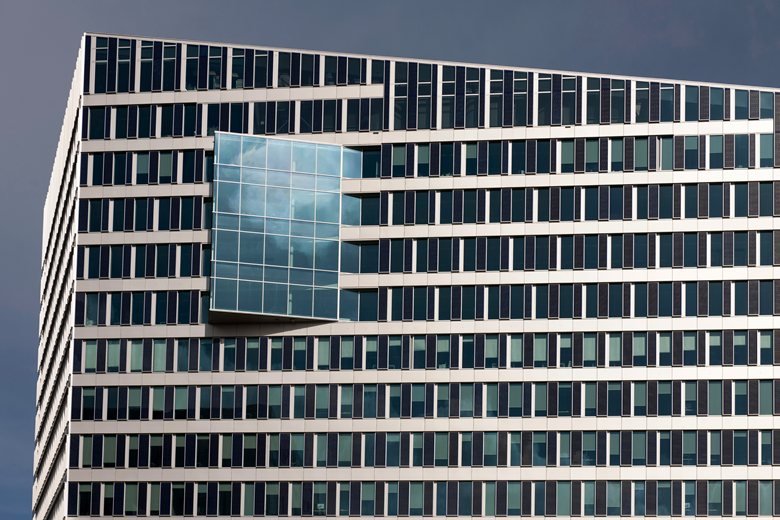
Perhaps one of the key aspects of The Edge that makes it so sustainable is its effective and maximised usage of sunlight. The southern wall of The Edge features a striking checkerboard design of solar panels and windows. Thick load-bearing concrete helps to regulate the building’s temperature, while deeply recessed windows minimise the need for shades, even with direct sunlight. Additionally, the roof is equipped with solar panels. As a result, The Edge consumes 70 percent less electricity than a typical office building. However, it was only after OVG added solar panels to the rooftops of nearby university buildings that The Edge could proudly claim to generate more energy than it uses.
Toilet water
When talking about the Edge, of course the toilet water is also reusable! At the rear of the parking garage, a large concrete tank collects rainwater that is used to flush the building’s toilets and irrigate the gardens. This room becomes quite noisy during rainy weather as water streams in from the collection systems installed on the roof and the outdoor balcony, creating a rush of sound as it fills the tank.
Key takeaways
There is significant potential for growth in the realm of smart buildings. While The Edge showcases remarkable performance in efficiency, cost reduction, and ecological impact, it reveals a substantial gap compared to traditional office buildings. Even achieving a fraction of The Edge’s sustainability targets in other projects would mark a notable advancement in office construction and usage.
Research indicates that smart buildings offer substantial long-term cost benefits over conventional structures. Although The Edge shows considerable savings, analyses suggest that smart buildings can cost about a third to half as much as similar conventional buildings. Initial investments may be higher, but the savings accumulate over time. Moreover, introducing even a few smart systems can enhance efficiency, with optimal results arising from the integration of multiple solutions.
A successful smart building focuses not only on conserving resources but also on adapting to how people use space over time. The Edge exemplifies this by accommodating Deloitte’s workforce: it provides desk space for only 1,100 employees despite having 3,000 staff members, recognizing that many only need a desk for part of their workday. This strategic allocation underscores that investing in quality spaces that enhance employee well-being and productivity can lead to cost savings and improved talent retention. Smart building technology plays a crucial role in achieving these benefits.
Sources
- Bloomberg, et al. “The Smartest Building in the World.” Bloomberg.com, 2019, www.bloomberg.com/features/2015-the-edge-the-worlds-greenest-building/.
- “EDGE | the Edge.” EDGE, www.edge.tech/buildings/the-edge.
- LAIIER. “What Is in a Smart Building? A Look inside the Edge in Amsterdam.” Blog.laiier.io, 13 Sept. 2022, blog.laiier.io/what-is-a-smart-building-the-edge-amsterdam.
- PLP Architecture. “The Edge, Amsterdam, the Netherlands – PLP Architecture.” PLP Architecture, 2024, plparchitecture.com/the-edge/.


